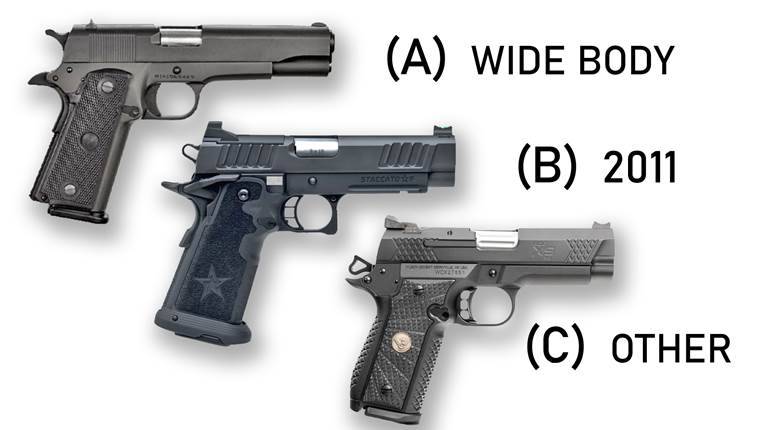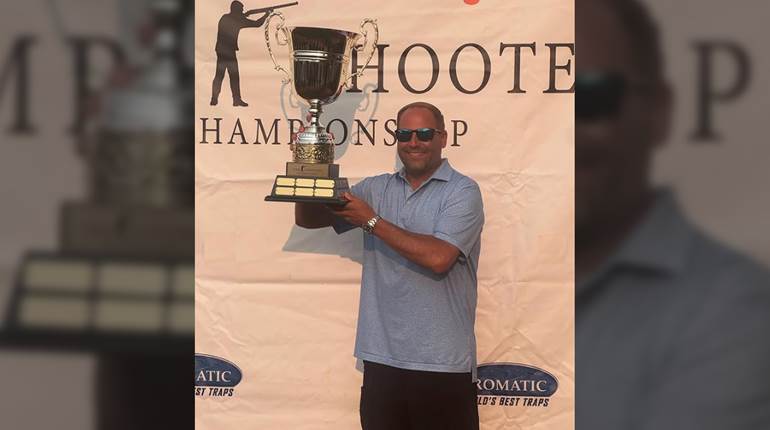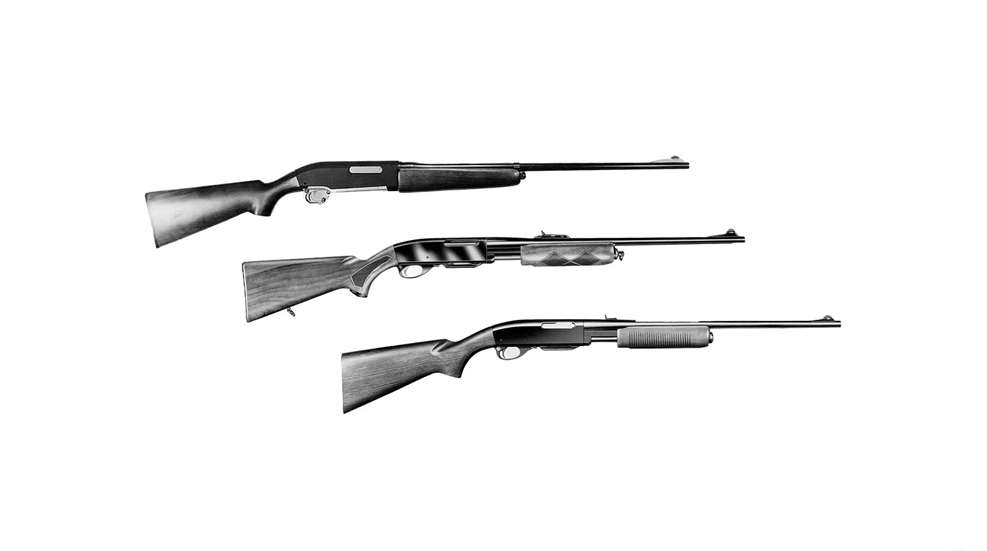
The modern family of Remington pump-action rifles can be traced back to 1933, when Charles Kuhn Davis took over as company president. Davis recognized that the Model 14 pump-action, which was introduced in 1912, was by then outdated and expensive to manufacture. The Model 141, a cosmetic update of the Model 14, appeared in 1935. Remington’s Crawford C. Loomis and his design team were authorized on January 20, 1936, to develop the Model 49 pump-action as a replacement for the 141, but work on it stopped in 1939 and on June 13, 1940, design work on an entirely new model began. It was given the in-house engineering studies designation “Model 760.”

But all Remington’s commercial projects were put on hold after the Japanese bombed Pearl Harbor on December 7, 1941, so the company could focus its efforts on the war effort. Work resumed in late 1943 on the Model 760 with three sizes of receivers: .300 H&H Mag. and .30-’06 Sprg.; .35 Rem; and .22 Hornet and .30 Carbine. A prototype rifle in .30-’06 Sprg. was first tested in 1944.
By 1947, there were actually two design teams working on a pump-action rifle—Remington’s Technical Division in Ilion, N.Y., and the Du Pont Engineering Department in Wilmington, Del. An inevitable “turf war” developed, and Davis resolved the conflict by putting Du Pont’s L. Ray Crittendon on the Remington design team. Crittendon had managed the development of the U.S. Model 1903A3 during World War II and then the Model 11-48 autoloading shotgun.
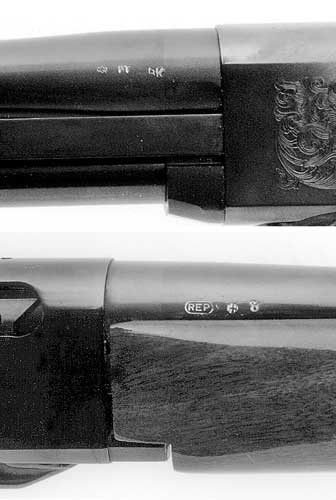
His pump-action rifle, based on the dimensions of the 28-ga. Model 11-48 shotgun receiver, was selected and subjected to extended function and endurance tests. Its original Model 762 designation was changed to Model 760 on May 22, 1950, to avoid confusion with the 7.62 mm Russian cartridge. Later, the “Gamemaster” tradename was added to tap into the good will and reputation built up by the venerable Models 14 and 141.
The new Model 760 was introduced to the public in Remington’s 1952 consumer catalog in three calibers. The.30-’06 Sprg. rifles became available in January 1952, followed by .300 Savage in April and the .35 Rem. in July. Sales in 1952 surpassed all marketing predictions, and they totaled 63,735: 41,417 in .30-’06 Sprg.; 14,431 in .300 Savage; and 7,887 in .35 Rem. The first production Model 760, serial No. 1001—“F”-grade engraved and inlaid with gold game scenes by Remington master-engraver Carl Ennis—was presented to Davis. It is currently on display at the Remington Museum in Ilion, N.Y. Almost all of 1952’s production was “A” grade with a plain, low-comb stock. The receiver was not drilled or tapped for scope mounts or a receiver sight, and the new rifle had an overall length of 42", a 22" barrel and a weight of 7½ lbs.
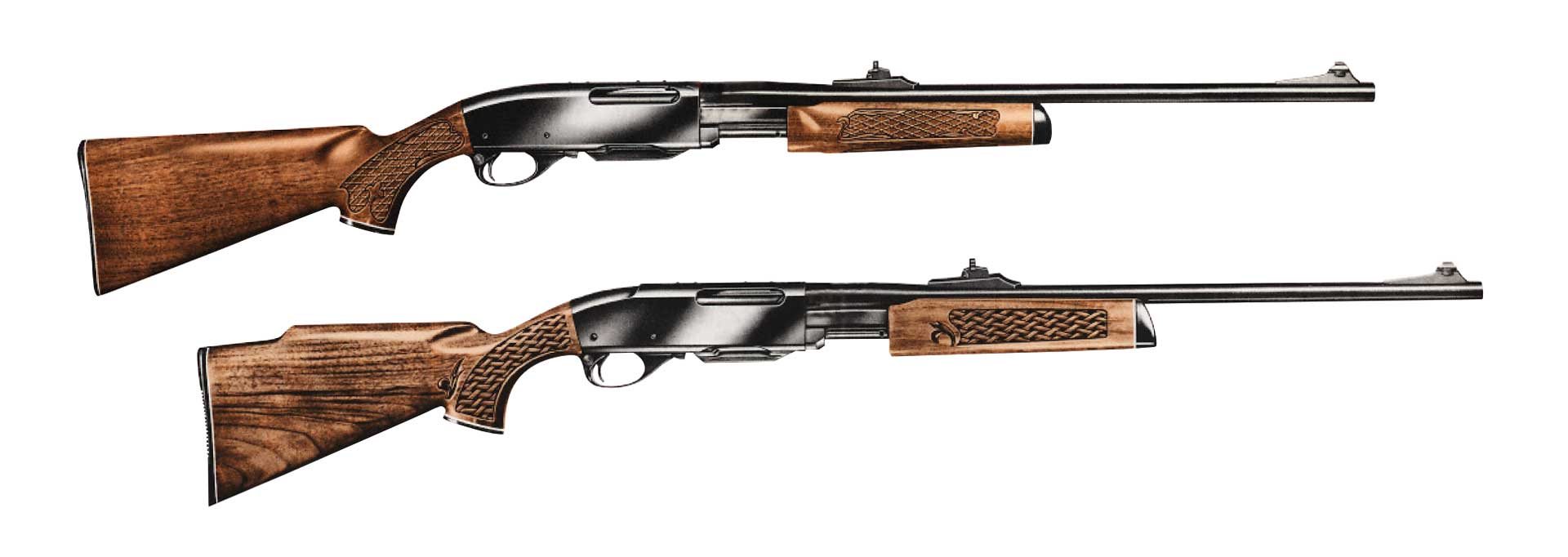
The Model 760 ADL “Deluxe” and BDL “Deluxe Special” grades were first offered in 1953, with both featuring high-comb, checkered stocks, receivers drilled and tapped for scope mounts and receiver sights. The buttstocks and the action-tube endcaps were fitted for sling swivels, and the checkering pattern employed is called by today’s collectors “5 Diamond” (not a Remington designation).
Total 1953 sales were 81,428 rifles, of which 11,822 were ADLs or BDLs. The next year, production increased to 85,065 rifles, while it dropped to 30,099 in 1955 due to the introduction of the new autoloading Model 740 rifle. Persistent consumer complaints about the “rattle” of the ejection port cover were answered by changing the steel cover to one made of a black nylon resin called Zytel. An “all purpose” high-comb stock was fitted to the A and ADL grades in 1958, while the BDL was dropped.
The first major change to the 760 occurred in 1960 with the introduction of the Model 760 C carbine. The carbine’s action tube did not extend past the end of the fore-end and an “O” ring was fitted in the fore-end to reduce rattle. Both were so successful that they were later incorporated into all 760s. The CDL carbine grade appeared a year later, and it was equivalent to the ADL rifle. Both the carbine and the rifle were fitted with new sights compatible with the “all purpose” stocks. The carbine had an overall length of 38½", an 18½" barrel and a weight of 7¼ lbs.
A single, standard-grade stock design with pressed checkering replaced the A, ADL, C and CDL grades in 1964. The Model 760 BDL Deluxe, later called the Custom Deluxe, was introduced in 1966. It featured a stepped receiver, Monte Carlo buttstock, flat fore-end and pressed basket-weave checkering. It was available in a left-hand version, but cartridge ejection was still out the right side.
The Model 760 serial number sequence was changed on November 26, 1968, because the Gun Control Act of 1968 required that no two guns from the same maker have the same serial number. The initial Model 760 sequence began at 1001 and ended at 549773. The new sequence, now shared with the Model 742 autoloader, began at A6900000.

In 1974 Remington began a major product improvement program to replace both the autoloading 742 and the pump-action 760. By 1976, development of the “New Generation Rifles,” as they were called, was well under way. The new pump-actions, now with model numbers, were introduced in late 1980 as the deluxe Model Six and the popular-priced Model 7600. Advertising, both in the catalog and the sporting press, concentrated on the Model Six, and it wasn’t until 1983 that the Model 7600 received equal billing. The Model 760 was discontinued on December 31, 1980, with the introduction of the Models Six and 7600. Nonetheless, sales continued well into 1981 to clean out the warehouse stock. Only 82 Model 760s were engraved in D and F grades.
The major improvements over the 760 were a simpler bolt, which now had four lugs in place of nineteen, and a single unit replacing the breech ring and barrel extension. Smoother operation came from a hardened steel receiver insert mated to a matching lug on the bolt and heavier action bars. The magazine was redesigned, and its release was enlarged. The scope mount screw size and screw hole spacing were increased for greater strength, so Model 760 scope mounts will not fit the newer guns. Both the Models Six and 7600 retained the original Model 760 specifications of an overall length of 42", a barrel of 22", and weight of 7½ lbs.
The Model Six was introduced January 1981 as a replacement for the Model 760 BDL Custom Deluxe. It featured positive cut checkering on a slimmer pistol grip, a full cheekpiece Monte Carlo buttstock, and a flared fore-end. A cartridge head medallion denoting the caliber was inlaid in the barrel extension, and serial numbers started at A4000000. It was not listed in the 1988 catalog as production ended December 31, 1987. A total of 36,236 rifles, including three engraved rifles, were produced. Percentage sales by caliber were: .30-’06 Sprg. 50%; .270 Win. 29%; .243 Win. 10%; .308 Win. 8%; 6 mm Rem. 3%.
The Remington Model 760: By The Numbers
The total production of the Model 760 was 1,034,438 of which 62,726 were carbines. A percentage of sales by caliber and years offered include:
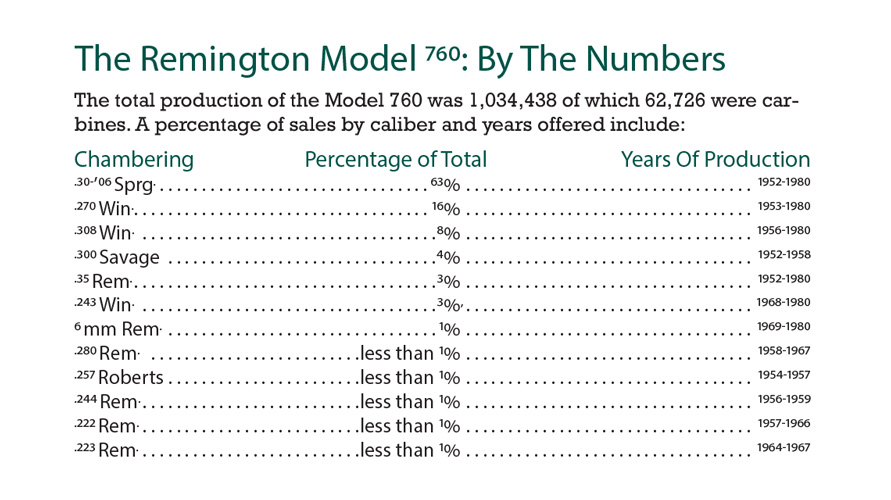
Two unique promotional tie-ins were introduced in the 1982 catalog. The Bullet Knife R1123 returned to the Remington list of accessories, and a dealer could sell one for each Model Four or Model Six sold. This since has become one of the most desirable of the re-issue of Remington Bullet knives. The 1982 suggested retail price for the knife was $45. A Sid Bell designed pewter grip cap insert in four big game designs and one blank for engraving also was offered for $9.95.
The Sportsman 76 rifle, a lower cost version of the Model 7600, was introduced in mid-1984. The Sportsman series was directed toward mass merchandisers, and it included the 74 autoloading rifle, the 76 pump-action rifle, the 78 bolt-action rifle, the 581-S bolt-action rimfire rifle, a 12-ga. autoloading shotgun and a 12-ga. pump-action shotgun. The Sportsman 76 was similar in style to the 1950s A-grade Model 760 and featured an uncheckered straight comb, lacquered walnut-finish hardwood stock and the same specifications as the Model 7600. All metal was matte-finish, and the bolt-action Model 788-style rear sight was used. The Sportsman 76 was discontinued December 31, 1987, with a total of 20,715 made in .30-’06 Sprg.
The affordably priced Model 7600, introduced in 1981 along with the Model Six, remains in production. The main differences were cosmetic, as the Model 7600 retained the Model 760’s straight comb buttstock and added fine-line press checkering in a fleur-de-lis pattern. The Model 760 was offered in .30-’06 Sprg., .308 Win., .270 Win., .243 Win. and 6 mm Rem. A carbine model in .30-’06 with an overall length of 38", an 18-½" barrel that weighed 7-¼ lbs. was added in 1987. At the same time, the stock finish was changed to satin with no change in the order number. In 1988, .280 Rem. and .35 Whelen were added to the line, with the .35 Whelen lasting until the 1997 catalog, while the .280 Rem. was dropped in 2001.
The first major change in the Model 7600 came in 1991 with an upgrade to the stock and checkering. The restyled stocks featured a Monte Carlo-style buttstock and a new pattern of cut checkering. The wood finish remained satin; however, rifles in .30-’06 Sprg. and .270 Win. were available with a gloss wood finish. The overall length of both the rifle and the carbine increased by 5/8" to 42-5⁄8" and 39-½" respectively.
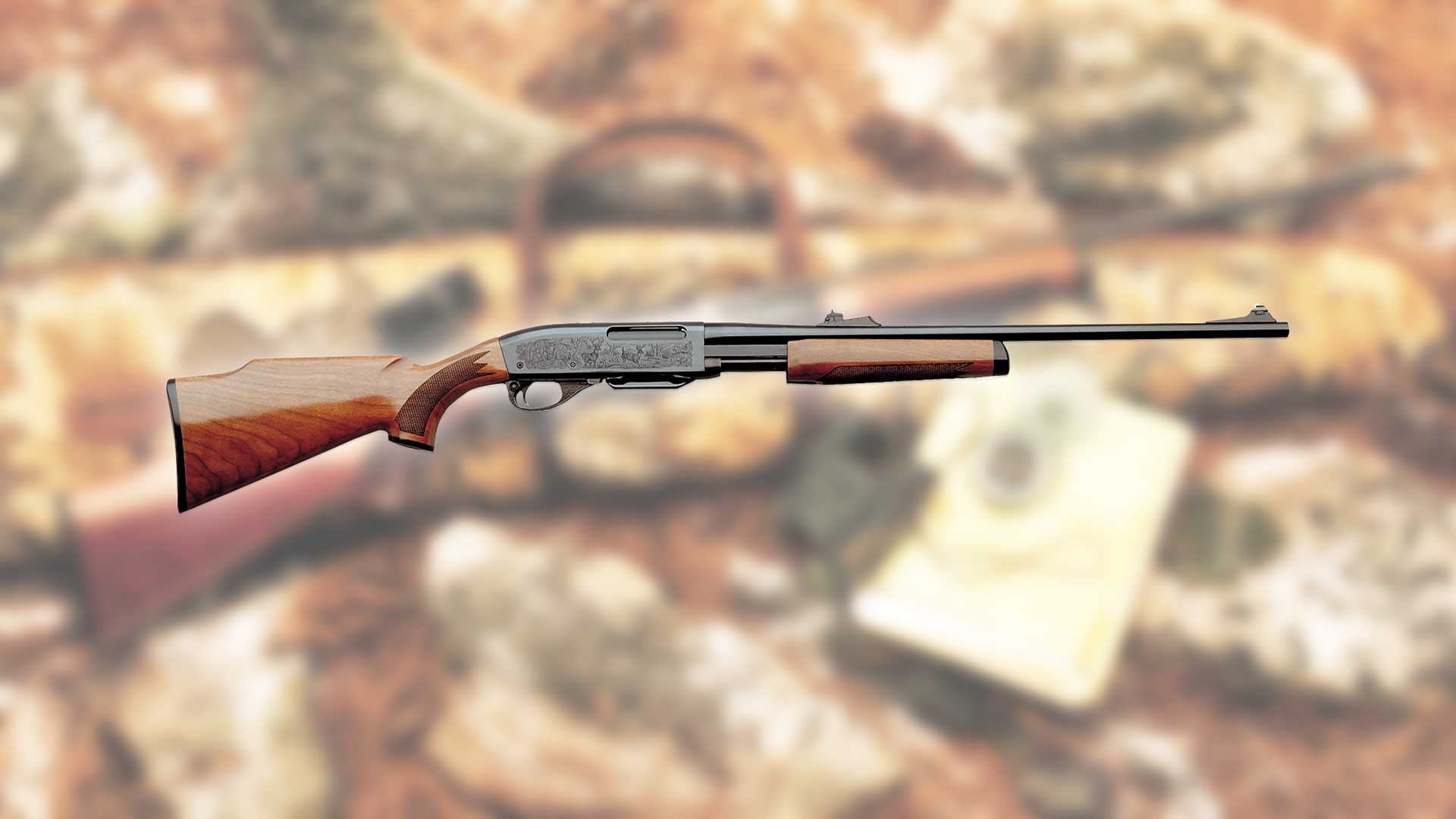
The Model 7600 SP or “Special Purpose” was introduced in 1993. The SP rifle featured matte-finish metal, low-luster wood finish and a camouflage Cordura sling. It was offered in .30-’06 Sprg. and .270 Win., and the SP model was not listed in the 1995 catalog.
Receiver panels of the Model 7600 were embellished with pressed, fine-line engraving in 1996. A game scene with two deer was on the right receiver panel, and the left panel scene had two bears. It was first noted as “new enhanced receiver engraving” and was discontinued in the 2004 catalog.

A synthetic-stocked Model 7600 introduced in 1998 remains part of the line. The fiberglass-reinforced buttstock and fore-end as well as the metal work have a matte-black, non-reflective finish. The Model 7600 Synthetic is offered both as a rifle and as a carbine in the same calibers as the wood-stocked models. Remington’s “Integrated Security System” (ISS) trigger lock, manufactured as an integral part of the safety, first appeared in late 1999.
The 1990s began the era of niche marketing as distributors special ordered non-cataloged variations. One distributor, Grice Wholesale of Clearfield, Penn., has offered the greatest number of non-cataloged variations in quantities ranging from 75 to 1,200. Many of the Grice special-order rifles were in 7 mm-08 Rem. Others were in .257 Roberts, .25-’06 Rem., .260 Rem. and .35 Rem. Black laminate or brown laminate stocks were offered in some years. Remington also produced a European-market Model 7600 with a special two-shot magazine.
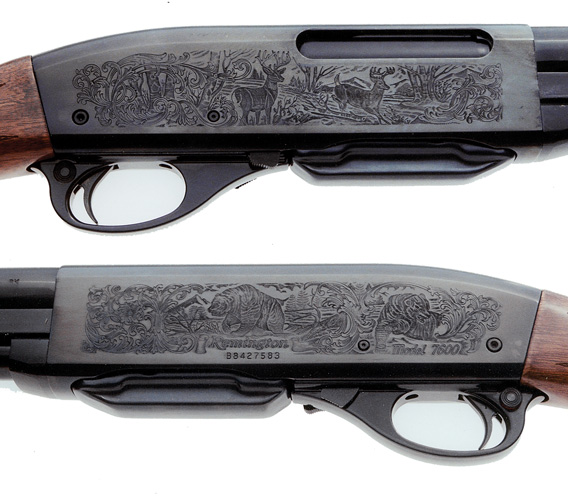
Several roll-engraved commemorative Model 760s and 7600s have been offered. In 1966, 4,610 Model 760s with a gold-filled 150th Anniversary logo on the left side were sold. Remington celebrated the Bicentennial by offering 3,804 Model 760s with a gold-filled “1776-1976 logo” on the left receiver panel. Grice offered 1,000 non- cataloged Model 7600s with a 175th Anniversary logo in 1991, and, a year later, it offered 2,000 Deer Hunter Specials with a gold-filled roll-marked deer scene based on a Robert Kuhn painting in the Remington Arms Collection.
Fewer than 35 gun sets, consisting of a Model 700 bolt-action, Model 870 pump shotgun, Model 1100 autoloader shotgun, Model 7400 autoloader rifle and the Model 7600 rifle, were sold in 1996 to commemorate the 180th Anniversary of Remington. The Model 7600 left receiver panel had a bear, a bust of Eliphalet Remington and a 180th Anniversary banner, all gold-embellished. The right receiver panel had two, gold-embellished deer. The 1997 catalog listed the Buckmasters Limited Edition 7600 with special pressure-applied, fine-line engraving on both receiver panels, and fewer than 800 were sold. The only Model 7600 commemorative carbine to date was issued in 1999 and 2000 to honor Larry Benoit, a native Vermonter nationally known as one of the greatest whitetail deer hunters.
—Eugene Myszkowski
This article appeared originally in the October 2005 issue of American Rifleman. To subscribe to the magazine, visit the NRA membership page and select American Rifleman as your member magazine.












